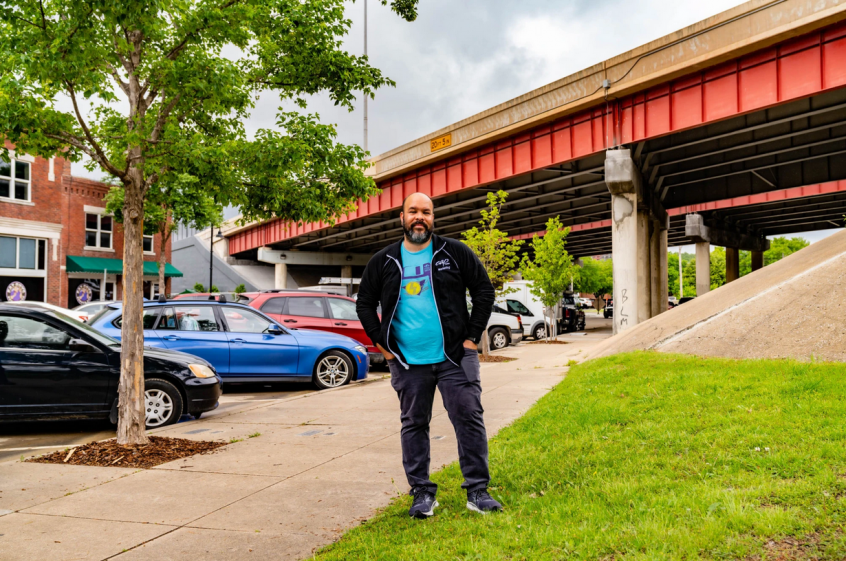Carlos Moreno stood on the Archer Street bridge over U.S. Highway 75 in northeast Tulsa, pointing west as he squinted into the sun. Much like the wind on top of the bridge, the traffic underneath was loud, and there was no shade from the May heat. But it’s here, he said, where you can see what was taken.
“Unless you’re actually standing here, you don’t get a sense of the destruction,” said Moreno, an author and graphic designer who moved to Tulsa in the late ’90s.
At the end of May, it will be a century since a white mob looted, burned and murdered in Tulsa’s Greenwood neighborhood, then known as the Black Wall Street, killing hundreds and displacing thousands more. With the anniversary just days away, many have focused on the violence. But that’s not the full story of Greenwood, nor its end.
In his new book set to be released next week, “The Victory of Greenwood,” Moreno explores how the neighborhood had a second renaissance led by Black Tulsans after the massacre, rebuilding even bigger than before. It was not the bloodshed that eventually destroyed most of Greenwood, however; rather, it was this, he said, pointing to the spaghetti of interchanges to the south and the expressway that stretches north.
“Black Tulsa is a happy city. It has new clothes. It is young and gay and strong,” W.E.B. Dubois wrote after a 1926 visit. “Five little years ago, fire and blood and robbery leveled it to the ground. Scars are there, but the city is impudent and noisy. It believes in itself. Thank God for the grit of Black Tulsa.”
By the 1950s and ʼ60s, Greenwood had blossomed into one of the most successful Black neighborhoods in the country. At its height, Black business owners operated 40 grocery stores and dozens of confectionaries across the mixed-use 35-block community.
Read the full story here.

